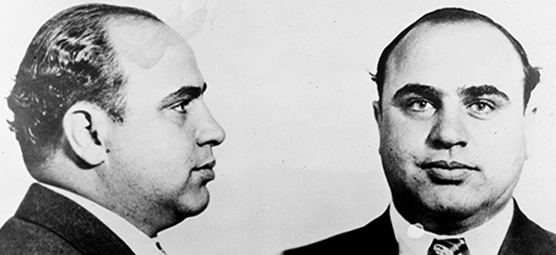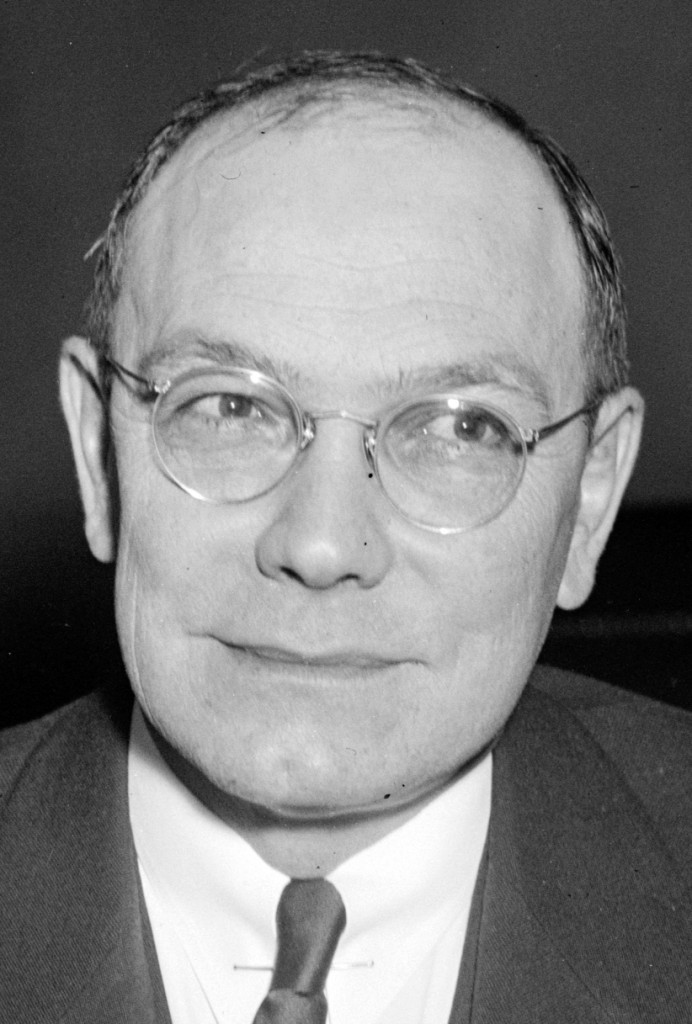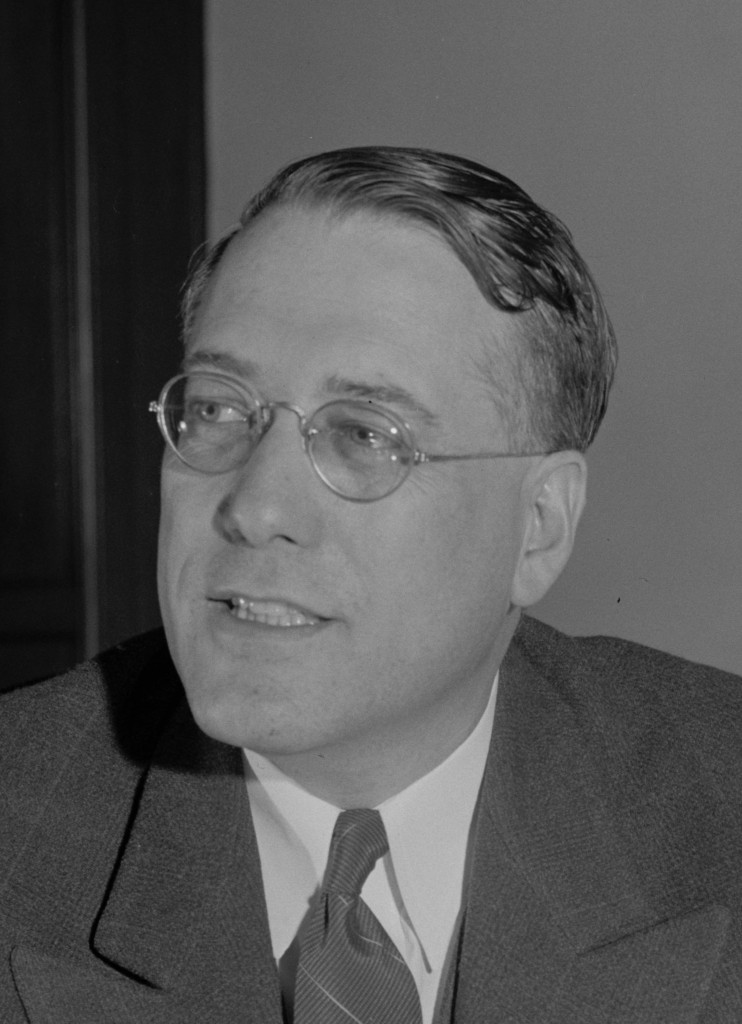From Capone to FIFA and the Silk Road
IRS Criminal Investigation division boasts stellar record of taking down crime networks

The Internal Revenue Service this year is expected to review more than 190 million returns expected for tax year 2015. But few Americans are aware that the agency’s Criminal Investigation division is one of the most successful law enforcement agencies within the U.S. government, playing a quiet yet effective role in combatting tax evasion, money laundering, public corruption and identity theft.
IRS CI has a conviction rate of more than 90 percent in the cases it submits for prosecution in federal court. Last year, its cases garnered hundreds of millions of dollars in judge-ordered forfeitures – money seized from criminals and deposited into the U.S. treasury.

For decades, IRS criminal investigators have built an impressive track record in defeating organized crime, sometimes serving as a last resort for bringing racketeers to justice. When Chicago Mob boss Al Capone managed to escape prosecution for years in the 1920s, an investigation headed by IRS agent Frank Wilson led to Capone’s indictment, conviction and imprisonment for tax evasion in 1931.
Last year, based on evidence presented by CI investigators, a federal judge handed down a life sentence against Ross Ulbricht, kingpin of the “Silk Road” international online drug ring. Ulbricht also had to forfeit nearly $184 million in proceeds from his narcotics and money laundering enterprises.
CI agents investigate cases in specialties such as money laundering and violations of the Bank Secrecy Act, which regulates the reporting of funds flowing through banks. Agents are skilled in finding evidence based on forensic examinations of financial information that is passcode protected or encrypted, including those used by domestic and foreign suspects seeking to finance acts of terrorism.
Cybercrime is the latest battlefront with criminals. One major case was the bribery and money laundering scandal involving individuals associated with FIFA, the international soccer organization based in Switzerland through which illicit money was electronically deposited in or transferred overseas through various American banks.
IRS investigators have assisted victims of the fast-growing national problem of identity fraud. The agency recognized 339,000 such cases in 2010, and the number mushroomed to 2.3 million in 2013. That year, of the $30 billion worth of fraud attempts, the IRS either recovered or blocked $24 billion for the victims.
The thousands of convictions from CI cases in 2015 included a man and two women in Oregon who swindled a victim out of $30 million in a decade-long psychic scam; a doctor in Detroit who submitted $34 million in fraudulent claims to Medicare and other insurers; a land developer in North Carolina implicated in a $23 million bank loan swindle involving a luxury housing development; a New Jersey man who ran a $200 million Ponzi-style real estate investment scheme; the director of the U.S. Virgin Islands legislature found guilty of bribery and extortion; and the former Governor of Virginia and his wife who accepted illegal payments.
The IRS started its criminal section, then known as the Special Intelligence Unit, in 1919. The agents working under the leadership of Elmer Irey earned the nickname “the T-Men.” During the Prohibition years of 1920 to 1933, when the U.S. government outlawed the manufacture, sale and distribution of most alcoholic beverages, federal agents found it hard to prosecute racketeers such as Capone who smuggled liquor for illegal sales in thousands of underground bars and speakeasies. Given the huge amount of profits liquor sellers, or bootleggers, made, they were able to provide payoffs to police officers, judges, jury members and even Treasury agents hired to enforce Prohibition laws, making it difficult to bring criminal cases to trial and win convictions.

Then on April 27, 1927, Mabel Willebrandt, the strident assistant U.S. attorney general assigned to enforce federal Prohibition laws during the 1920s, argued a game-changing case before the Supreme Court: U.S. vs. Sullivan. Willebrandt contended that money obtained through criminal sales of liquor was taxable by the IRS. Lawyers on the side of criminals claimed to do so would violate their clients’ right against self-incrimination under the Fifth Amendment of the Constitution. On May 16, the high court ruled that gains from the illicit liquor business are subject to the income tax and that the Fifth Amendment did not protect anyone with income from such businesses from willfully refusing to file a tax return on their income from it.
Still, federal and state authorities found it hard to charge Capone, whose liquor operation was taking in $60 million a year (in 1920s dollars), with anything that would stick. Things reached the final straw on February 14, 1929, when seven men tied to bootlegger George “Bugs” Moran were lined up against a wall in Chicago and mercilessly gunned down, allegedly by members of Capone’s rival gang. The brutality of the slayings drew international attention to gangland violence associated with bootlegging. In March 1929, with the nation still reeling from news of what became known as the St. Valentine’s Day Massacre, President Herbert Hoover asked his Attorney General Andrew Mellon, “Have you got this fellow Capone yet? I want that man in jail.”
The IRS had been investigating Capone since 1928. Willebrandt’s success in 1927 in the U.S. vs. Sullivan case sustained the U.S. Revenue Act of 1926, which imposed criminal and monetary penalties for those who failed to file taxes on net income. Then Congress passed the Revenue Act of 1928 setting criminal and monetary penalties for willfully attempting to evade taxes. The brazen Capone, in addition to his massive illegal liquor smuggling business, had prostitution, gambling and other rackets with lots of money to bribe cops and juries.

Mellon turned to Frank Wilson, who joined the IRS’s Intelligence Unit in 1920, and Elmer Irey, the chief of the unit. Mellon wanted to get Capone on felony tax evasion. Capone had not only failed to file income tax returns for years during the 1920s, he did not even have a bank account or more than a few signed checks to review to give the government an idea of how much he made each year from criminal activities.
Irey appointed IRS agents to pose as undercover gangsters and join Capone’s criminal organization. He got two of Capone’s bookkeepers, Leslie Shumway and Fred Reis, to serve as secret witnesses before a federal grand jury in Chicago. Wilson’s investigators figured that Capone received about one-sixth of his gang’s income. From estimates of that income from 1924 to 1929, they determined Capone earned more than $1 million and had evaded about $219,000 in federal taxes. With penalties adding up to $164,000, Capone owed the IRS $383,000.
The grand jury indicted Capone on 22 felony and misdemeanor counts related to tax evasion. Others charged included Capone gang members Jake “Greasy Thumb” Guzik, Sam Guzik, Frank Nitti, T.J. Druggan and Frank Lake. At one point, Capone put a hit out on Wilson but he canceled it. Capone was convicted in 1931, sentenced to 11 years (he would be released in 1939), fined $50,000 and ordered to pay the IRS $215,000.
Wilson’s final report on Capone, issued in 1933, went a long way in revealing the hoodlum’s underground operations. Wilson wrote that he had to rely on “word of mouth” to obtain revenue figures since Capone dealt almost only in cash aside from some money wired to him by Western Union. Capone’s gang was able to steer clear of prosecution because, he wrote, “their activities were protected by account of large graft payments made by them to insure the unmolested conduct of their various businesses.” Capone bookkeeper Shumway’s testimony revealed that a large portion of Capone’s hidden income came from illegal gambling in the Chicago suburb of Cicero at the Hawthorne Smoke Shop, a frequently moved cigar store used since 1924 as a front for a sizeable backroom casino, employing 40 to 50 people with horse race wagering, roulette, craps, blackjack and poker.
More recently, IRS CI agents helped build tax evasion cases against organized criminals taking part in the skimming of winnings from Las Vegas casinos such as the Aladdin and Jolly Trolley in the 1970s.
A casino “skimming” operation involves Mob members who have hidden ownership interests in the casino. After the currency and coins won by the casino are collected, the Mob’s employees would secretly remove thousands of dollars from the count room. These “skimmed” funds would be delivered surreptitiously by courier directly to Mob bosses in untraceable cash. The people fronting the casinos for the mobsters would then file a federal tax return without reporting the amount “skimmed” from the casinos to avoid revealing the true income.
In 1980, CI agents were called in to help the FBI trace the Las Vegas skim by hoodlums in Chicago, Milwaukee, Kansas City and St. Louis. They examined thousands of pages of seized records. The IRS investigated where money taken from Las Vegas was being invested in legitimate businesses by organized crime after the FBI captured $200,000 in cash from a Milwaukee hotel, one of the on-the-level businesses owned by the family of Milwaukee mobster Frank Balistrieri.
In Las Vegas, CI agents were investigating an illegal sports gambling operation, accepting wagers from Chicago, Cleveland and New York, run by Anthony “Tony the Ant” Spilotro. The operation was grossing an estimated $1 million a week on behalf of Las Vegas mobster Frank Masterana. The IRS also learned that Spilotro’s brother Vincent had an income of $104,000 while claiming to be unemployed. A federal grand jury in Reno in 1980 indicted Vincent Spilotro for failing to file his income taxes from 1974 to 1977. CI agents working with St. Louis police learned that a reported $1 million a year skimmed from the Aladdin in Las Vegas was being delivered to John Vitali, the reputed Mob boss of St. Louis.
One of the more celebrated criminal capers broken by an IRS criminal agent was the unlikely case of a company that allegedly provided undetectable performance-enhancing drugs to professional athletes such as baseball player Barry Bonds and bicyclist Tammy Thomas.
In 2002, IRS Special Agent Jeff Novitzky, a former college basketball player, took such an interest in the possibility that a Burlingame, California-based company Balco provided the drugs that he started going through the trash the company threw out. While delving into Balco’s garbage, Novitzky found copies of emails and empty needle wrappers and soon gathered damning evidence of illegal substances used in professional sports. The revelations triggered a national scandal for Major League Baseball and other sports institutions. Novitzky got Balco associates to confess to selling steroids and human growth hormone to players, leading to charges of money laundering, perjury and obstruction of justice. Though few were convicted (Bonds won an appeal that threw out his felony obstruction-of-justice conviction), the outrage led to big changes in policies against doping in pro and amateur sports after years of denial.
Feedback or questions? Email blog@themobmuseum.org





